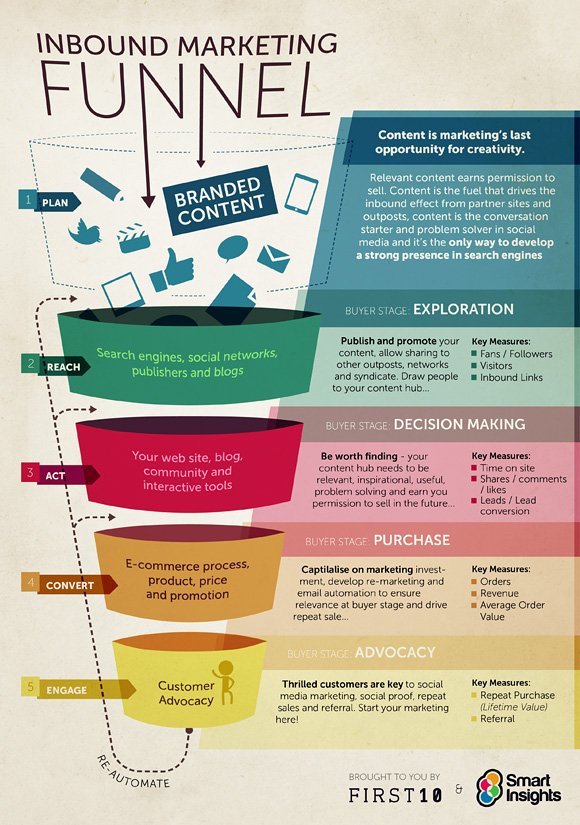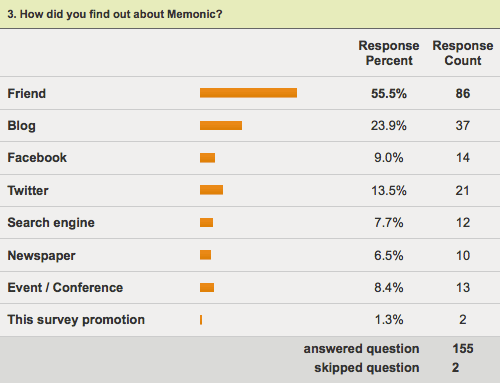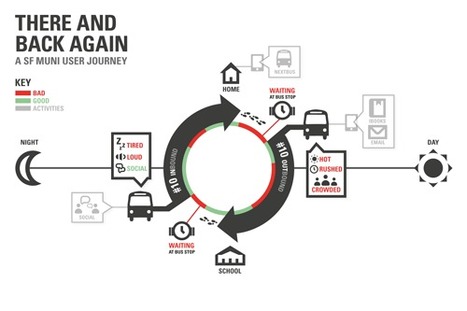We all want better results.
Who couldn’t use more visitors turning into leads, and more leads turning into paying customers?
You have the power to create those results for your business. But in the words of Peter Drucker, “you can’t manage what you can’t measure.”
That’s why conversion-rate monitoring and optimization are vital. Turning to data to understand what’s working well and what could be improved puts you in the best position for sustained success.
Conversion Rate Optimization is an investment. Getting the best possible ROI on that investment requires finding and gathering the right kind of data. The higher the quality of the data you collect, the better insights you’ll gain from testing and evaluating the results.
Collecting high-quality data isn’t as difficult as you might think. Keep reading to see how to do it.

Image Source: mortsan via Compfight cc
Searching for the Best Data: Quantitative and Qualitative
According to Admiral Grace Murray Hopper, “one accurate measurement is worth a thousand expert opinions.”
Some businesses dive into CRO without considering how they’ll gather and analyze data beforehand. Doing the groundwork first would put them in a better position to achieve success. A 2013 report from Econsultancy revealed that businesses adopting a “structured approach to improving conversion rates are twice as likely to see an increase in conversion.”
Deciding what data to collect and how to collect it is integral to any successful CRO strategy. Take a look below to see how you can collect two different types of data – quantitative and qualitative – and make them the foundation of your CRO strategy.
Quantitative Data
Quantitative data is foundational to any effective CRO strategy. Here are two ways you can collect it:
1. Google Analytics
Use acquisition analysis to focus on your main traffic sources and monitor your metrics. Pay close attention to your site’s bounce rate, average order value, and conversion rate. Then, continue with a behavior analysis to see what your users are doing on your website. Find and document these numbers for an idea of what’s working and what can be improved.
The conversion analysis’ conversion funnels provide great information on where you’re losing purchases and why the transactions are coming up short. Gathering this data is the first step to testing and improving your conversion funnel. This funnel infographic shows how this data is found:
Image Source: The Daily Egg
2. Segmentation
Universal Analytics is another effective source to understand how different users interact with your website. Many of us use segmenting to better understand our users, and this source makes it easy to gather information on new vs. returning visitors, shopping cart abandonment, and your most loyal customers.
You can use A/B testing to challenge your assumptions about why different traffic segments behave the ways they do. Then you can apply the insights from these tests to optimize your website for more conversions. But before you do, take a look how to gather another type of information essential to developing your CRO strategy: qualitative data.
Qualitative Data
Numbers can only tell you part of the story. It’s great to analyze bounce rates and traffic levels, but the best CRO strategies dive deeper. They turn to qualitative data for explanations why the numbers add up the way they do.
Going straight to the source for these answers – your customers – opens up a window of opportunity. You’ll get a better sense of what your customers need and how well you’re serving those needs.
Collecting the best qualitative data begins by asking general questions. Why do customers need my product? How will they use it? What’s the main motivation that drives them to buy?
Once you’ve done some legwork, it’s time to start gathering qualitative data to fuel your hypotheses and begin testing.
Gathering Qualitative Data: Get the Most from Your Customers
Your customers can give you insights you’ll never find in your Google Analytics dashboard. Here are 6 ways to gather the best qualitative data:
1. Get Your Customer Service Team Involved
Your best source of “inside information” into your customers’ minds might be hiding right under your nose. Members of your customer service team speak with customers all the time, giving them insight and a unique perspective. You can tap into that knowledge. Set up a meeting with some of your best customer service reps to get their ideas how to boost your conversions.
2. Address Your Customers Directly
There’s no substitute for one-on-one conversations. Reaching out to your customers directly (over the phone, via email, or even in person) will make them feel special and provide insight you won’t find anywhere else. Personal outreach lets you understand product praise, complaints, and other feedback in language your customers use naturally. It also fosters customer loyalty and trust.
3. Create Surveys
Surveys are an efficient way to gain more qualitative insight into how your business is performing. Asking questions like the following can provide a wealth of new CRO testing ideas:
- “How did you find out about us?”
- “Did you find everything you were looking for on own website?”
- “What suggestions do you have?”
You have a choice of being direct or indirect in your approach. Quarlaroo strikes up a conversation with visitors while they browse through your site, while 4Q, a free service from iPerceptions, offers an exit survey from your landing page. You could also use SurveyMonkey to offer visitors an incentive – like a discount or chance to win a gift card – if they complete your survey. Keep your customers in mind, and do what feels best for you. The sample below shows how you can gather data on where your customers heard about your business.
Image Source: Teledini
4. Leverage Tools
Heatmaps provide actionable data to help you understand what’s getting noticed on your site and what users click. CrazyEgg provides a great service for identifying these hot spots. For even deeper insights, try ClickTale; it records videos of your visitors’ screens and measures scrolling.
Visualizing your data provides qualitative insight into the ins and outs of your website. Plus you can customize these tools to cater to your needs and collect specific information you’d like to gather.
Image Source: inBoundio
5. Try Usability Studies
Usability studies are often overlooked. They are affordable and are conducted informally, making them a smart way to gather qualitative data.
UserTesting is a neat tool that helps you travel through your website by entering keywords and choosing your ad. They also can test competitors’ paths and note any reactions to their study. You can set up the tool as a set of feedback questions or an open-ended form for getting information from the test. Just make sure to document your feedback so you can use it to fuel your understanding of the data.
Image Source: UserTesting
6. Use Experience Mapping
Experience mapping is a two-fold process. First, you can get an idea of experience touch points by finding out where users interact with your website. Then, you gather your data. Which issues are you seeing at each touch point? A tool like Adaptivepath can help you conduct this research and get a more in-depth understanding of your website’s strong and weak points.
Image Source: Adaptive Path
Applying Qualitative Data to Create Better Results
Okay, so you’ve gathered some data. What’s next? Using insights within that data to test your website and optimize conversions. Here’s how you can get the ball rolling.
1. Conduct A/B Testing
Around three in five companies surveyed say A/B testing and multivariate testing are ‘highly valuable’ for improving conversion rates.- Econsultancy 2013 Report
Now that you’ve collected your data, it’s time to use testing to confirm your hypotheses and challenge assumptions. You can run A/B tests to test the original version of a webpage (the “control”) with a slight variation (the “treatment”). Make sure you have the right software, then run an A/B test. It could take some time to generate statistically significant results, so A/B testing should be ongoing for the biggest boost in conversions. This infographic covers why A/B testing is such an integral part of the CRO process.
2. Make Major Changes
Don’t be afraid to test drastically different designs and assess their impact on your conversions. Many businesses are conservative with testing, sticking to simple color changes and tweaking call to action buttons. But you can change the way users sign up for your website, how they create a free account, and more. Major changes like these can lead to the largest increases in conversions.
In an effort to increase conversions, Basecamp started off with a simple drawing and developed subheadings to get their message to customers. Eventually they decided to give their website a major facelift, and it paid off; the redesign increased conversions by 14%.
3. Get Creative
Videos on landing pages can improve conversion rates by up to 80%.- EyeView Digital
Adding a little flair to your website can increase your revenue dramatically. You can incorporate infographics, images,, and even video trailers to better engage your users. Also, take the time to invest in developing lifelong customers. Offer incentives for customers if they refer a friend or spend a certain amount of money. You’ll keep your customers happy and loyal.
4. Add Personalization
Simplify. 20% increase in decision simplicity results in a 96% increase in customer loyalty, 86% increase in likelihood to purchase, and 115% increase in likelihood to recommend. –CEB
So, you’ve got the hang of the basics now. Trying some advanced techniques can take your conversion rate over the top. You can track your user activity, find out what content interests them, and incorporate your findings into your homepage. Target your users’ favorites and send out personalized emails. You’ll notice higher click through rates with these strategies.
You can also try Automated Behavioral Targeting, which reaches out to every customer and develops the best content for them based on their previous browsing activity.
Leveraging High-Quality Data to Increase Conversions
A systematic CRO strategy can generate more leads, customers, and an edge over your competitors. It’s one of the best investments you can make for your business. But it is an investment.
The higher the quality of your data, the better you can assess your performance and spot opportunities to improve. Apply the strategies in this post to collect better quantitative and qualitative data and develop a testing plan to optimize your performance online. Then it’s just a matter of working your plan and time. The rewards – more customers, profits, and a higher profile in your niche – pay off for months and years to come.
Which method of data collection do you think leads to the most actionable insights for your business? Leave us a comment below and let us know!











